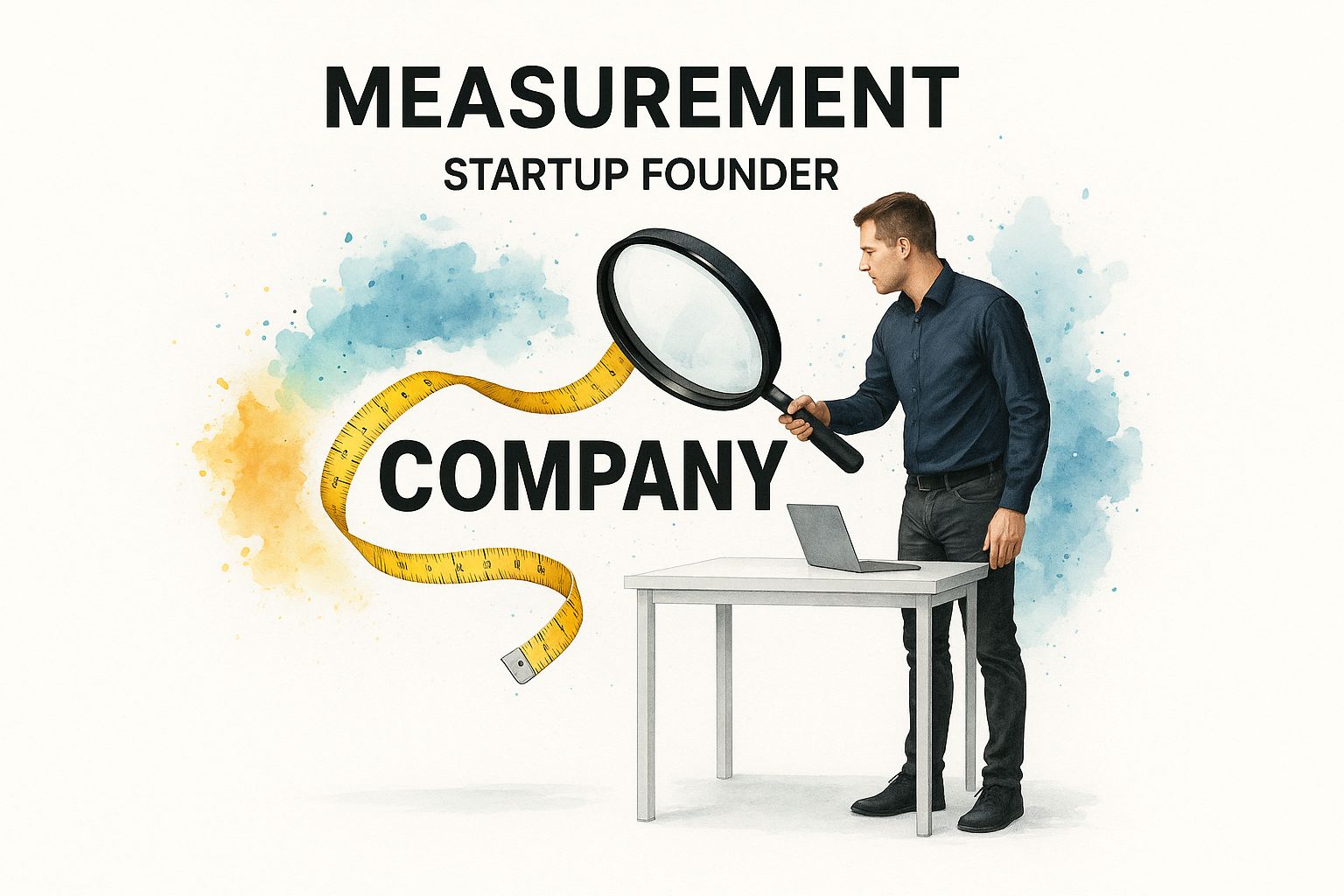Your Brand Awareness Survey Is Probably Useless. Let's Fix It.
Stop wasting money on a useless brand awareness survey. Here's a battle-tested founder's guide to asking questions that actually drive business growth.
Posted by
Related reading
Customer Advisory Board: The Founder's Playbook for Avoiding Catastrophic Mistakes
A practical guide to building a customer advisory board that provides honest insights, validates your strategy, and prevents costly product mistakes.
Why Reputation Management Tools Matter More in 2025 Than Ever
Learn how reputation management tools help businesses track reviews, analyze feedback, and protect brand image. A modern guide with AI-driven insights using Backsy.
Sentiment Analysis Isn’t a “Nice-to-Have”. It’s a Lie Detector for Your Product.
Founders love chasing features, but customers speak in emotions. Learn what sentiment analysis really is, how it works, and how it reveals the truth behind your feedback. No fluff.
Let’s be honest. You think “brand awareness” is marketing fluff. A soft, fuzzy metric you can’t take to the bank. You’re half right. Most founders screw this up, turning surveys into ego-stroking vanity projects that are a complete waste of time and money.
They ask questions like, "Do you like our new logo?" and get useless, happy answers.
But ignore what the market actually thinks of you, and you’ll be lucky to survive the next quarter. A real brand awareness survey isn’t a pat on the back. It’s a reconnaissance mission. It’s the cold, hard data that tells you if you’re a memorable signal or just another forgettable noise in a crowded market.
Stop Admiring Your Brand and Start Measuring It
Too many founders are in love with their own brand. They admire the logo, the clever copy, the slick website. It’s a trap.
Your brand isn’t your logo. It’s the space you occupy in your customer’s mind. And if you’re not measuring that space, you have no idea if you’re growing or shrinking into oblivion.
If people don’t know you exist, they can’t buy from you. It's that brutal.
Ditch the Ego Trip
This isn't about asking, 'Do they like us?' It’s about asking, 'Do they even know who we are, and why should they care?'
- A brand survey is your first line of offense in a packed market.
- Ignoring it is flying blind, burning cash on ads that nobody will remember tomorrow.
- This is a diagnostic tool, not a compliment-fishing expedition.
Think of your brand as a financial asset, not a feeling. Understanding the meaning of Voice of Customer analysis is how you stop guessing and start knowing.

As the image shows, you measure assets. You don't just admire them.
Brand Awareness Is a Financial Asset, Not a Feeling
Still think this is marketing fluff? The top 100 global brands are worth a combined $10.7 trillion. That valuation comes from feedback from 4.5 million consumers on 22,000 brands. Brand equity isn’t a feeling; it’s a multi-trillion-dollar asset class.
If you don't treat your brand with the same rigor you apply to your P&L, you’re leaving money on the table. For a deeper dive on why this matters, check out these expert strategies for brand awareness measurement.
Takeaway: Stop treating your brand like a piece of art and start treating it like a measurable asset on your balance sheet.
The Only Two Brand Awareness Metrics That Matter

Forget the dozen survey types some agency tried to sell you to justify their retainer. When you're in the trenches, only two metrics move the needle: Aided and Unaided awareness. Everything else is a distraction.
The Holy Grail: Unaided Awareness
This is the prize. Someone asks a potential customer, "When you think of [your product category], what brands come to mind?" If they name you without a prompt, you've won.
You’ve carved out real estate in their brain. Your marketing isn’t just being seen; it's being remembered. This is top-of-mind awareness, and it’s the only sustainable competitive advantage. It means you’re not just an option; you’re becoming the answer.
The Consolation Prize: Aided Awareness
This is when you show someone a list of logos—yours and your competitors'—and they say, "Oh yeah, I've seen that one." It’s better than being invisible, but it means you’re just one face in a police lineup.
Being recognized is not the same as being recalled.
High aided awareness with low unaided awareness is a massive red flag. It means your brand is expensive background noise. People see you, but they don't think of you when it counts.
Measuring both tells you if you're a category leader or just another face in the crowd. It’s as fundamental as tracking your core customer satisfaction metrics.
Aided vs. Unaided Awareness: The Founder's Cheat Sheet
| Metric | What It Really Means | Your Next Move |
|---|---|---|
| Unaided Awareness | You own a piece of your customer's mind. You're becoming synonymous with the solution. | Double down. Your message is cutting through the noise. Don’t screw it up. |
| Aided Awareness | You're a familiar face, but not the go-to choice. Your logo works, but your purpose doesn't stick. | Your visuals are fine, but your core message is weak. Sharpen your positioning before you’re forgotten. |
Takeaway: Stop chasing vanity metrics and focus on one thing: do they recall you without a prompt, or just recognize you from a list?
How to Write Survey Questions That Don't Suck
Most survey questions are garbage. They’re leading, biased, and designed to produce the answer you want to hear. Your job is to be a detective uncovering the truth, not a cheerleader for your own brand.
Quit asking self-serving questions like, “How innovative do you find our brand?” It’s an ego trap that gives you useless data.
Unaided vs. Aided Questions: The Only Place to Start
You have to ask these questions in the right order, or the entire survey is contaminated.
For Unaided Awareness (ASK THIS FIRST): “When you think of [your product category, e.g., 'project management software'], what brands are the first to come to mind?” Open-ended. No hints. No multiple-choice. You’re measuring what’s already in their head.
For Aided Awareness (ASK THIS SECOND): Show them a grid of logos—yours and your competitors’—and ask: “Which of the following brands have you heard of?” This tells you if you’re at least a recognizable face in the crowd.
Mess up this sequence and your data is worthless. If you need the nitty-gritty on structuring this, our guide on how to create a questionnaire lays it out.
Go Deeper With Diagnostic Questions
Once you have the basics, dig into how people see you. Are you "innovative" or just "expensive"? Force them to make a choice.
Your goal is a survey that feels like a direct, blunt conversation. You want brutal honesty, not polite lies.
Bad Question: “Do you think our brand is reliable?” (A yes/no question begging for a positive answer).
Good Question: “Which of the following words would you use to describe [Your Brand]? Select up to three.” (Provide a mix of positive, negative, and neutral words: Reliable, Expensive, Outdated, Innovative, Confusing, Simple).
Even Better Question: “For each attribute below, select the brand it best describes.” (Create a table with attributes on one side and brand logos on the other). This forces a direct comparison and reveals your true market position. It takes 5 to 7 impressions for a consumer to even remember you; this question tells you what those impressions are actually creating. You can find more branding stats and insights on Shapo.io.
Takeaway: Stop writing questions that ask for compliments and start writing questions that force difficult, honest choices.
Where to Find People Who Will Tell You the Truth

So, who are you sending this to? If your first thought is your email list, stop. Immediately.
Surveying your current customers isn't a brand awareness survey. It’s an echo chamber. You’re asking your fans if they like your band. Of course they do. It’s useless data. You need to survey the market you want to win, not the one you already have. This means you need to spend some money.
Infiltrate the Cold Market
Your goal is to measure penetration in the cold market—people who fit your ideal customer profile (ICP) but don't know you yet. You need unfiltered answers from a neutral audience.
Use survey panels. They aren't sexy, but they work.
- SurveyMonkey Audience: The reliable workhorse. Get incredibly specific with targeting.
- Pollfish: Great for reaching mobile-native audiences fast. Scrappy and effective.
- Targeted Social Ads: Run your survey as a lead-gen form on LinkedIn or Facebook. Target by job title, industry, and interests. It's messier but puts your questions right in front of your ideal customer.
Define your audience with ruthless specificity. Not "small business owners." Try "e-commerce SMB owners with 5-20 employees who have recently shown interest in inventory management solutions."
A perfect survey sent to the wrong people yields worthless data. An okay survey sent to the right people can give you gold.
The Not-So-Dirty Secret of Incentives
How do you get strangers to give you five minutes? You pay them. But there's a balance.
Offer too little, and no one bothers. Offer too much, and you attract professional survey-takers who speed-click for cash, polluting your data. The sweet spot is a few dollars—enough to value their time but not enough to be the only motivation. Test it. Pay for intel, not just opinions.
Takeaway: Stop surveying your fans. Pay strangers who fit your ICP to tell you the unvarnished truth.
How to Analyze Results Without Lying to Yourself
https://www.youtube.com/embed/XNSB7Ybsdx8
The data is in. This is where your ego meets reality. The numbers on your screen are the market holding up a mirror.
Don’t just grab the headline number like “25% aided awareness” and slap it on a slide. That’s a vanity metric. The real story is buried deeper.
Slice the Data Until It Tells a Story
Cross-tabulate everything. Dissect the results until they bleed insights.
- Demographics: How does awareness differ between your target ICP and a secondary market? If Gen Z loves you but your target is 45-year-old CFOs, you have a massive problem.
- Exposure: Compare people who saw your LinkedIn ads with those who didn't. No difference? Your ads are invisible. Turn them off.
- Brand Attributes: Do the few people who recall your brand also call it “for beginners” when you’re trying to sell to enterprise? Your entire positioning is broken.
This isn’t about building a pretty report. It’s about building a battle plan for the next quarter.
The goal of analysis is not to confirm what you believe. It's to find the single, most uncomfortable truth that forces you to change.
Turn Percentages into a Punch List
A good analysis ends with an actionable to-do list.
If your unaided awareness is near zero, your top-of-funnel content is forgettable. The action isn’t “do more marketing.” It’s “our messaging is broken; tear it down and start over.”
This is where brand trust becomes a hard number. A staggering 81% of consumers need to trust a brand before they buy. And 57% prefer companies they feel a connection with. If your survey shows low awareness and negative perception, you're failing to build the basic trust required to even get in the door. You can discover more stats on how trust impacts branding to see how critical this is.
The data isn't the final report; it's ammunition. Use it to kill bad campaigns and challenge your assumptions.
Takeaway: Stop looking for numbers that make you feel good and start hunting for the data that forces you to get better.
Your Brand Is What They Say It Is
Let’s land the plane. Your brand isn’t your logo or your mission statement. It’s the gut feeling people have about you. It's what they say when you're not in the room.
A brand awareness survey is your way of listening in on that conversation at scale. It’s a vital health check. It tells you the hard truth: Is your message connecting? Are those expensive ads working? Or are you just shouting into the void?
If you're not measuring brand awareness, you're a passenger in your own company, hoping you land somewhere profitable.
The choice is simple: measure what people think, or prepare to be ignored.
Common Questions I Get From Founders
Still skeptical? Here are the usual pushbacks.
How Often Should I Run This Thing?
Don't do this every month. It's overkill and you're just measuring noise. Think of it as an annual physical. Run a survey once or twice a year. Set a baseline, execute your strategy for 6-12 months, then run it again to see if you moved the needle.
Takeaway: Annually or semi-annually. Any more is a waste of money.
What's a Good Brand Awareness Score?
This is the wrong question. It’s like asking, "How long is a piece of string?" A "good" score is meaningless without context.
Focus on two things: your own progress over time and how you stack up against direct competitors.
If you’re at 5% unaided awareness and your main rival is at 50%, you know the score. But if you move from 5% to 8% in six months while they stay flat, you’re winning.
Stop worrying about industry averages. The only numbers that matter are your last score and your competitor’s current score.
Can't I Just Use a Twitter Poll?
No. That's like asking your mom if you're handsome. The answer is biased and worthless for market intelligence.
Your social followers already know you. Surveying them is talking to people inside your own bubble. A real brand awareness survey measures your reach with people who don't follow you. That’s where the growth is.
Takeaway: Survey your target market, not your fan club.
Stop guessing what customers think and use Backsy to capture their real voice, turning raw feedback into your next big move.